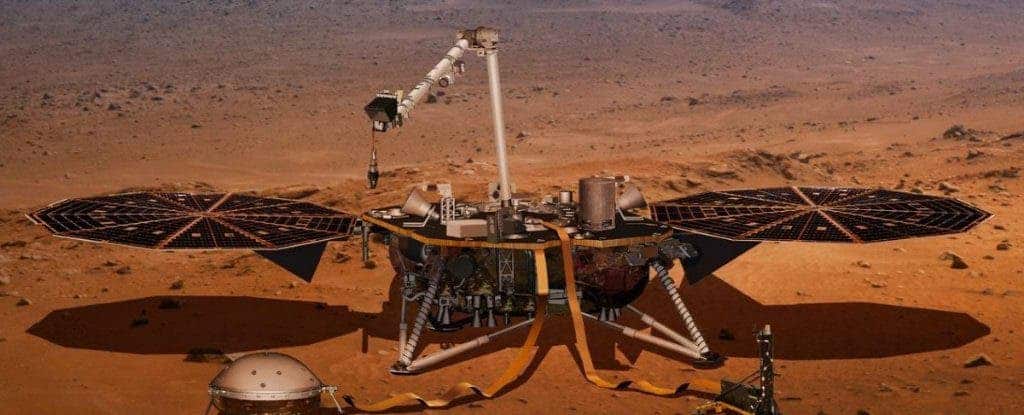NASA’s InSight probe, which just recently touched down on the Red Planet, recorded the first instance of Martian wind. The feat was totally unplanned but NASA engineers took advantage of the opportunity nevertheless, as the wind whizzed across the probe’s solar panels.
The unaltered recording is in the lower range of what humans can hear, which is why you’ll need a subwoofer or some quality headphones to hear the rumble. An edited version, which you can hear in the video posted here, has been raised two octaves to make it perceptible to the human ear.
InSight is equipped with two very important sensors: a seismometer that measures ground motion and an air pressure sensor that detects mechanical vibrations. Both sensors can record sounds, which is essential vibration propagating through a fluid.
The air pressure sensor, which is primarily meant for meteorological observations, recorded the Martian wind directly. The seismometer, on the other hand, recorded lander vibrations caused by the wind moving over the spacecraft’s solar panels.
The funny thing is that InSight’s solar panels look a lot like a giant pair of Mickey Mouse ears.
“It’s like InSight is cupping its ears and hearing the Mars wind beating on it,” said Tom Pike, InSight science team member and sensor designer at Imperial College London.

InSight’s recorded the Martian wind on Dec. 1, when it was blowing with 10 to 15 mph (5-7 meters a second), from northwest to southeast. That’s consistent with the direction of dust devil streaks from the landing area, observed from above by NASA’s orbiting spacecraft.
In a couple of weeks, the seismometer will be placed on the planet’s surface by InSight’s robotic arm. It will still be able to detect the lander’s movement, though channeled through the Martian surface.
The seismometer is also the probe’s most important instrument. Over its two-year mission, InSight will stay put in a single place, where it will drill and ‘listen’ for marsquakes. By studying these slight seismic waves, scientists want to determine what makes up the planet’s mantle and core. Basically, InSight will study seismic waves as they pass through the Red Planet, using that information as a sort of ultrasound to find out what is lurking underneath the crust.
InSight will also help scientist come to a better understanding of how the solar system formed and evolved. Both Mars and Earth are rocky planets that had lots of water on their surface during their rich history. However, the two planets look very differently today — Earth is wet and teeming with life while Mars is barren and probably dead.






